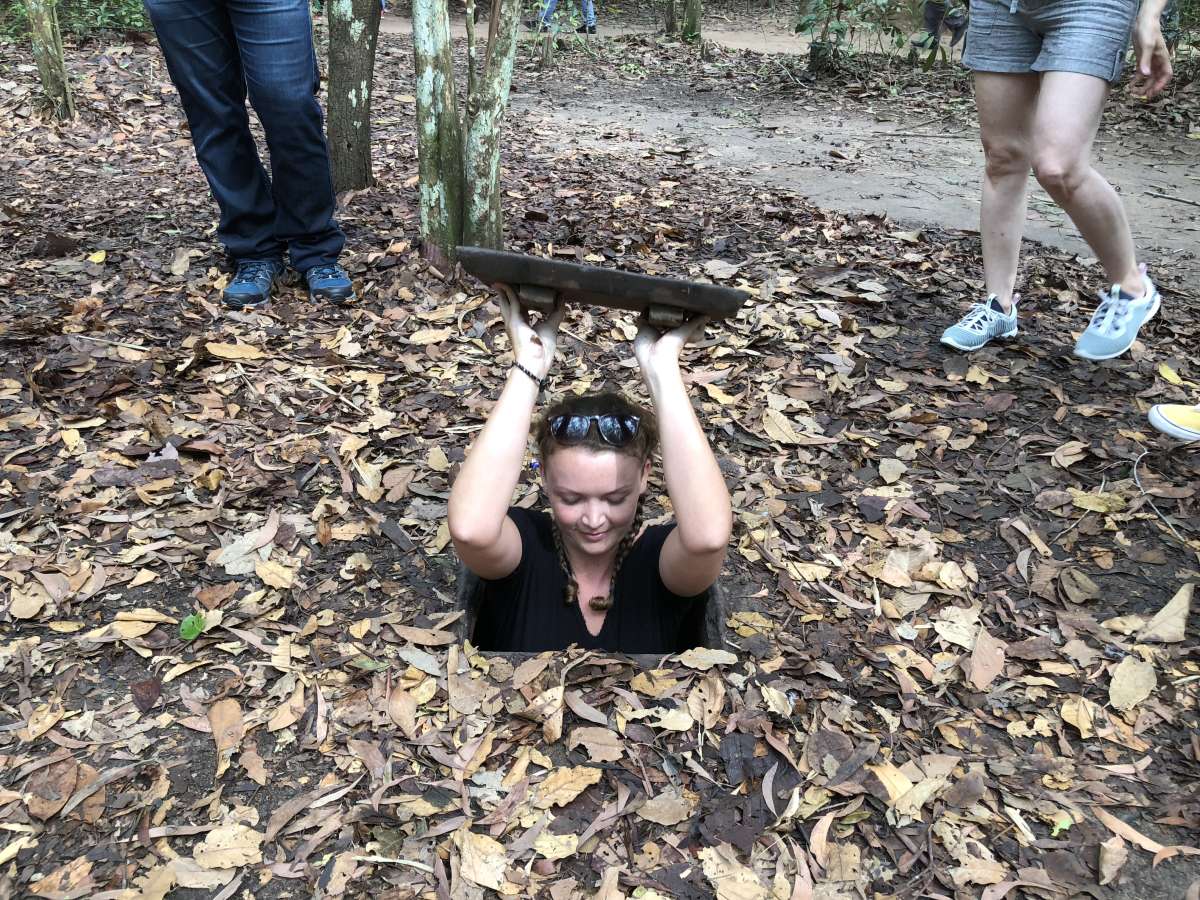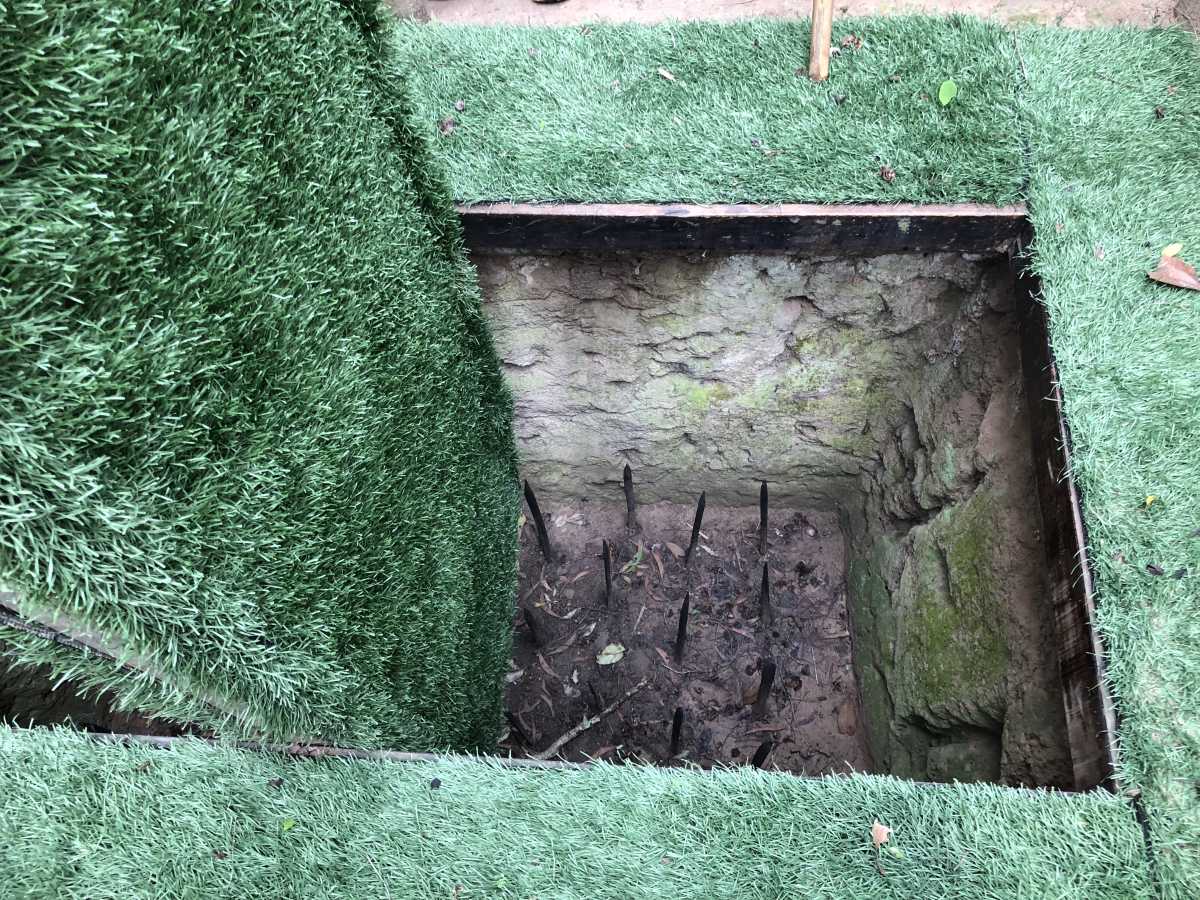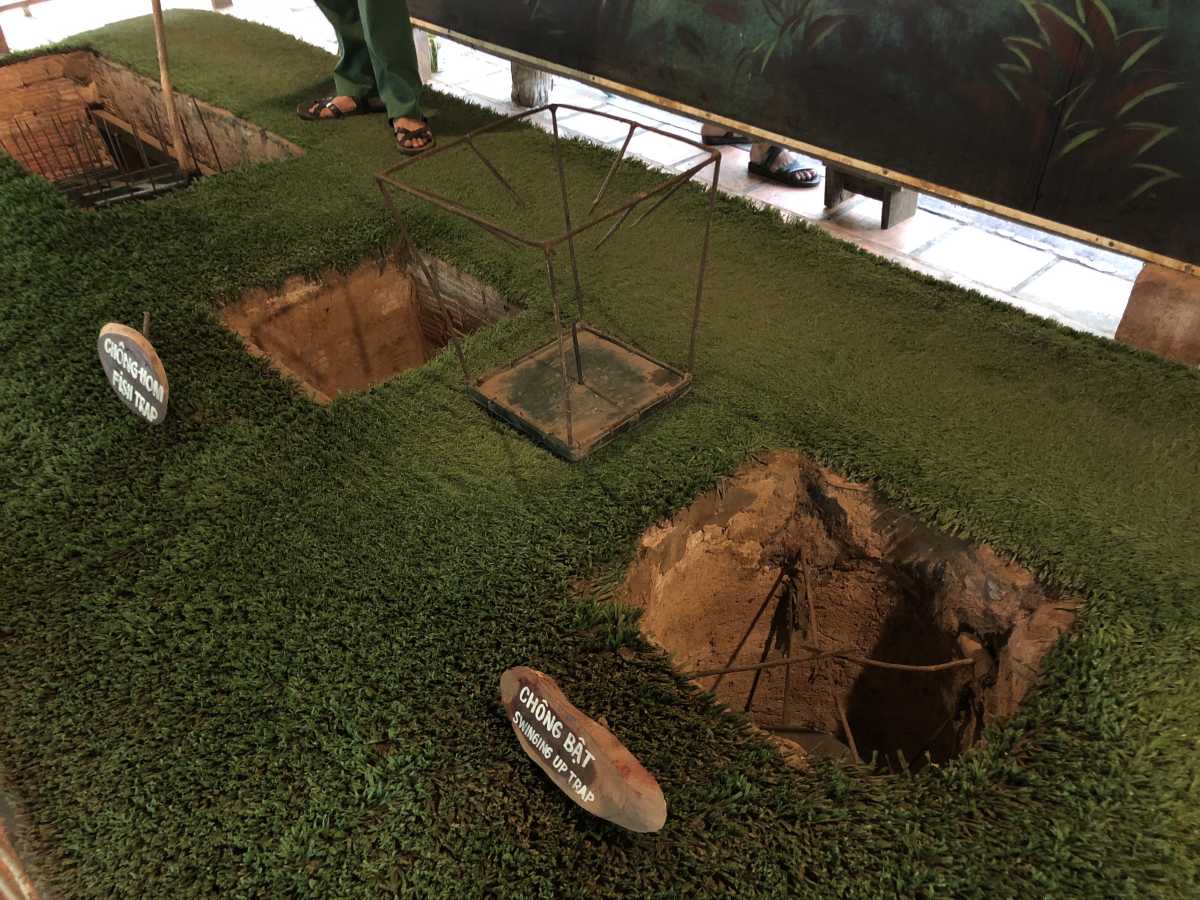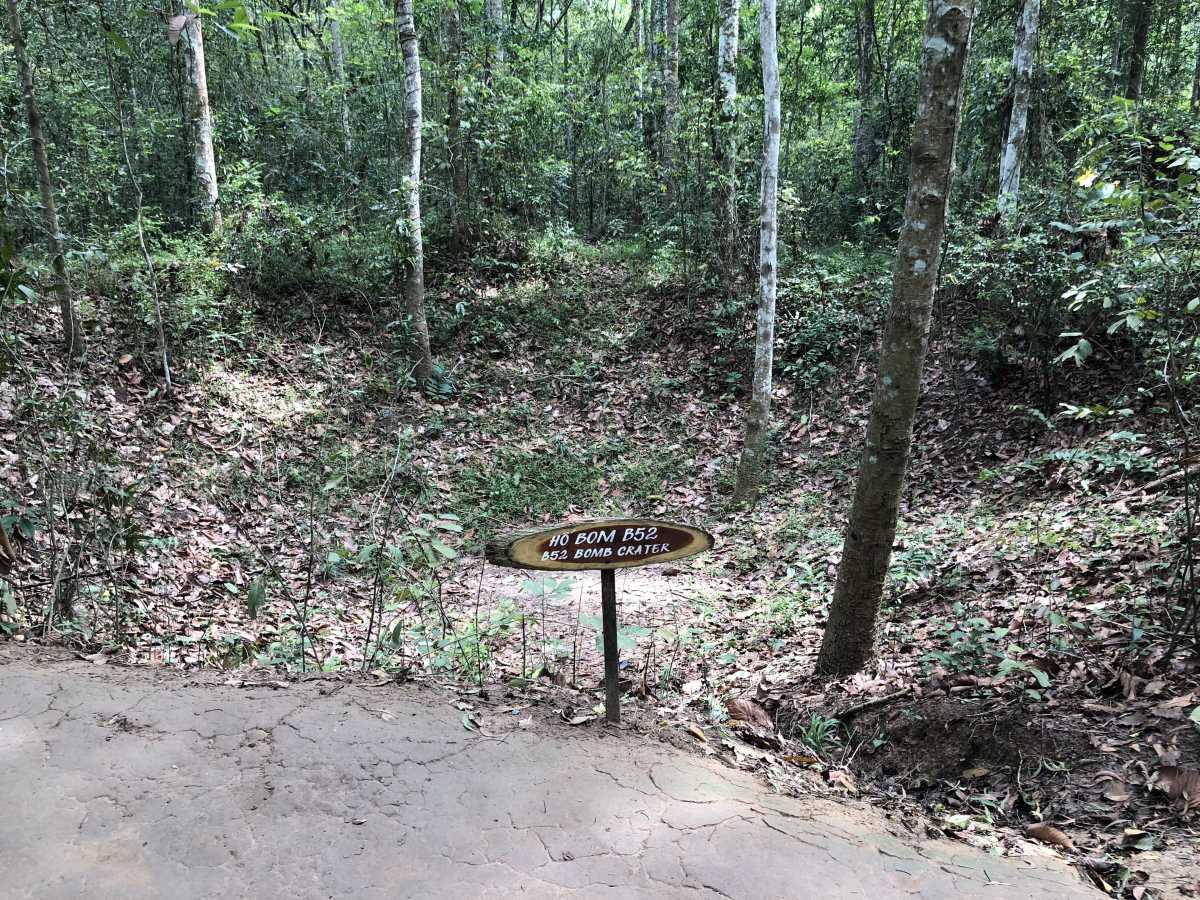After doing some research into the different tour operators, we chose Les Rives. The tour cost approximately £60pp. It included a 1-hour journey to the Cu Chi area via speedboat. Also included were a light breakfast, lunch and entry to the historical tunnel site.
Most of the other tours involved a lengthy 2-hour bus journey in much larger groups. After seeing the size of some of the tour groups, we were glad we went with Les Rives!
Speedboat transfer
We were picked up from our hotel at 7am sharp, before taking the short 10-minute drive to the pier where we boarded a (very nice) speedboat along with 10 other people. We were served some pastries and coffee while taking in the scenery along the Saigon River. The journey takes anywhere between 1 hour and 1 hour 20 minutes, depending on the current.
History of the Cu Chi Tunnels
Our guide was incredibly engaging and knowledgeable. Before visiting the tunnels, he took the time to explain some of the history behind the Vietnam War, and how its effects are still felt in Vietnam today.
In 1954, the war began between the communist forces in the North of Vietnam, and the South along with their main allies, the United States.
During the Vietnam War, communist troops known as the Viet Cong dug thousands of miles of tunnels deep below the ground. Soldiers used these tunnels to house troops, transport supplies and lay traps. One of the most extensive tunnel networks lies beneath the Cu Chi district, northwest of Saigon (now Ho Chi Minh City).
The war ended with the communist North seizing control of the South, with the country unified as the Social Republic of Vietnam in 1976.
Inside the tunnels
We were given the option to go inside the tunnels if we wanted to. First, we were able to hop inside one of the smallest tunnel entrances. We then visited a 20m-long tunnel. This gave us a good idea just how cramped and miserable life must’ve been inside them.
Some of the people in our tour group went down and came straight back out, deciding that it was just too claustrophobic (something to keep in mind if you’re planning a visit). I just about managed to fit into some of the smallest tunnels, but Karl struggled!

Interesting facts about the Cu Chi Tunnels
We were impressed by the ingenuity used to build the tunnels. Our guide told us that the Viet Cong even cooked in the tunnels. They would dig ventilation routes that emerged much further away, sometimes up to 200m, so as not to give away their position.
It was also interesting to learn that the Viet Cong spread chili and pepper powder around the ventilation holes, in order to throw the enemy’s dogs off the scent. They even stole clothes from the American army and put them near the ventilation holes to confuse the sniffer dogs.
Traps and bombs during the Vietnam War
The tunnel site houses some gruesome examples of the traps that the troops set during the war. Many of them look completely inconspicuous to the naked eye.


We also discovered how the Viet Cong took the TNT from unexploded bombs, and were able to reuse bomb fragments to create their own bombs and traps. Around the Cu Chi area, we saw multiple B-52 bomb craters which gave us an insight into just how powerful they were.

Visiting the Cu Chi Tunnels
The tunnels are definitely a must-see if you’re already in Ho Chi Minh. We’d also highly recommend a trip to the War Remnants Museum. We hadn’t actually planned to visit the museum, but we decided to go after visiting the tunnels.
We felt compelled to learn more about the history of Vietnam and the war. Of course, some parts of the tunnel tour and the museum are upsetting, but we’re glad we saw them.
Have your say